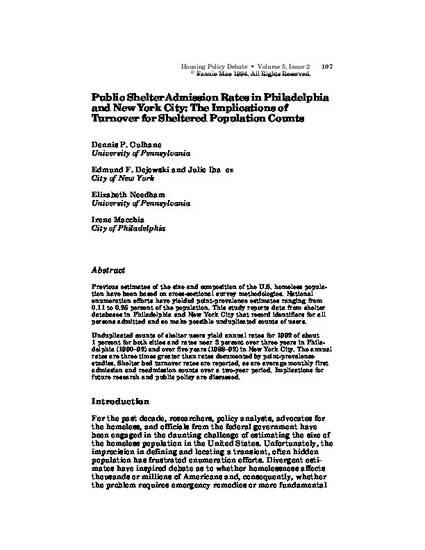
Previous estimates of the size and composition of the U.S. homeless population have been based on cross-sectional survey methodologies. National enumeration efforts have yielded point-prevalence estimates ranging from 0.11 to 0.25 percent of the population. This study reports data from shelter databases in Philadelphia and New York City that record identifiers for all persons admitted and so make possible unduplicated counts of users.
Unduplicated counts of shelter users yield annual rates for 1992 of about 1 percent for both cities and rates near 3 percent over three years in Philadelphia (1990–92) and over five years (1988–92) in New York City. The annual rates are three times greater than rates documented by point-prevalence studies. Shelter bed turnover rates are reported, as are average monthly first admission and readmission counts over a two-year period. Implications for future research and public policy are discussed.
- public shelters,
- counts of shelter use,
- shelter bed turnover
Available at: http://works.bepress.com/dennis_culhane/10/

We have contacted the publisher regarding the deposit of this paper in ScholarlyCommons@Penn. No response has been received.